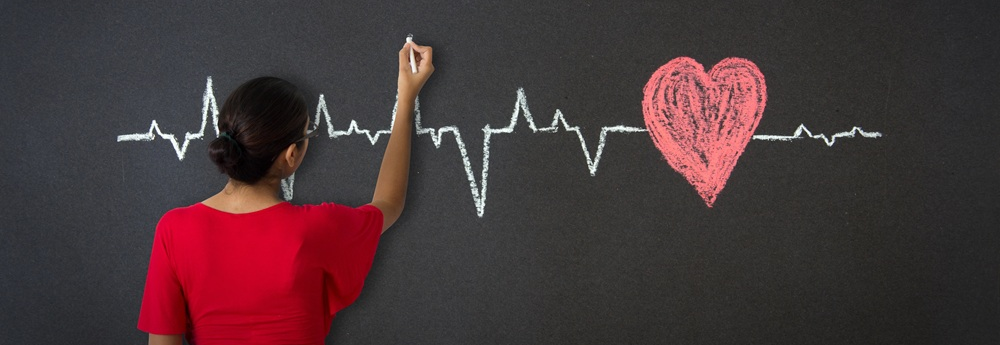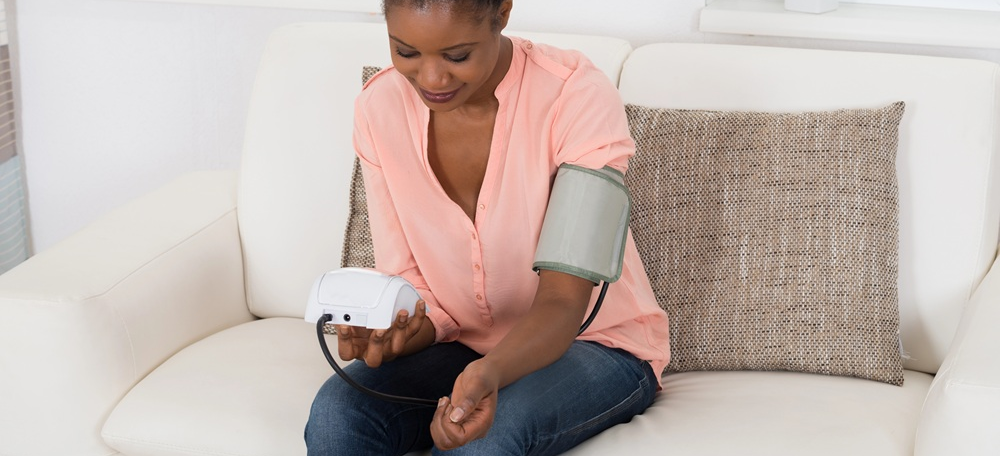June 17, 2025

In the previous chapter of our series The Care Gap – Rethinking Women’s Health in Medicine, we discussed how current knowledge gaps in women’s health stem directly from the historical exclusion of females from both clinical and preclinical research. The consequences of these gaps extend beyond the laboratory and clinical trials, shaping women’s healthcare experiences in clinical settings. Women often receive delayed diagnoses, inappropriate treatments, or have their symptoms dismissed entirely, even when research has identified new diagnostic standards or key differences in symptoms and treatment responses. Combined with the lack of female-specific research, the delays in translating scientific findings into clinical practice have profoundly impacted women’s healthcare, from cardiovascular disease to acute care and pharmacology.

The dangers and consequences of excluding women from research are exemplified in the clinical response to cardiovascular heart disease (CVD), the leading cause of death for women worldwide. For years, doctors failed to recognize that women often present with different heart attack symptoms than men. While men typically experience crushing chest pain, women may have subtler signs like nausea, shortness of breath, or back pain [1]. This misunderstanding has led to too many women being sent home from emergency rooms in the midst of heart attacks [2].
Women also have unique risk factors for CVD that are often overlooked in clinical settings [3], including:
Despite CVD being the leading cause of mortality for women worldwide, they continue to receive fewer diagnostic procedures and have poorer outcomes than men [2], [4].

The gender gap extends beyond CVD, affecting many other aspects of acute care and diagnostics:

Numerous sex-based differences in pharmacokinetics and drug efficacy have now been identified. A 2020 review found 76 of 88 drugs had different pharmacokinetics in women, with 96% posing a higher risk of adverse events [13]. Some notable sex-based variations include:

In 2021, researchers published a 28-year longitudinal study that started with 27,000 healthy participants (54% women). They found that systolic blood pressure (SBP) over 100 mm Hg increased risk of CVD in women, while SBP over 130 put men at risk. In women, SBP over 110 mm Hg created the same risk of myocardial infarction (heart attack) as men with an SBP over 160 [25]. Importantly, in all categories of risk (including stroke and heart failure), the SBP threshold for women was significantly lower than that of men, yet the standard of care threshold for “normal” is still a genderless 120/80 in many places.
To add insult to injury, there is often a long delay in translating research findings into clinical practice, leaving many physicians and pharmacists unaware of critical findings involving sex differences in medicine. The far-reaching and sometimes life-threatening consequences of these gaps make closing them essential for improving women’s health outcomes.
Measures such as modernizing continuing medical education and enhancing how sex-specific clinical guidelines are updated are essential areas that we will discuss in more detail in the final installment of this series. In our next installment, we’ll explore one of the most pervasive medical issues reported by women: the dismissal of their pain by healthcare providers.
References
[1] A. V Ferry et al., “Presenting Symptoms in Men and Women Diagnosed With Myocardial Infarction Using Sex-Specific Criteria.,” J. Am. Heart Assoc., vol. 8, no. 17, p. e012307, Sep. 2019, doi: 10.1161/JAHA.119.012307.
[2] M. Daher et al., “Gender disparities in difficulty accessing healthcare and cost-related medication non-adherence: The CDC behavioral risk factor surveillance system (BRFSS) survey.,” Prev. Med. (Baltim)., vol. 153, p. 106779, Dec. 2021, doi: 10.1016/j.ypmed.2021.106779.
[3] P. K. Mehta, S. Gaignard, A. Schwartz, and J. E. Manson, “Traditional and Emerging Sex-Specific Risk Factors for Cardiovascular Disease in Women.,” Rev. Cardiovasc. Med., vol. 23, no. 8, p. 288, Aug. 2022, doi: 10.31083/j.rcm2308288.
[4] R. Mehran, B. Vogel, R. Ortega, R. Cooney, and R. Horton, “The Lancet Commission on women and cardiovascular disease: time for a shift in women’s health.,” Lancet (London, England), vol. 393, no. 10175, pp. 967–968, Mar. 2019, doi: 10.1016/S0140-6736(19)30315-0.
[5] P. Mahajan et al., “Factors Associated With Potentially Missed Diagnosis of Appendicitis in the Emergency Department,” JAMA Netw. Open, vol. 3, no. 3, pp. e200612–e200612, Mar. 2020, doi: 10.1001/jamanetworkopen.2020.0612.
[6] C. Carnlöf, M. Iwarzon, M. Jensen-Urstad, F. Gadler, and P. Insulander, “Women with PSVT are often misdiagnosed, referred later than men, and have more symptoms after ablation,” Scand. Cardiovasc. J., vol. 51, no. 6, pp. 299–307, Nov. 2017, doi: 10.1080/14017431.2017.1385837.
[7] A. Y. X. Yu et al., “Sex Differences in Presentation and Outcome After an Acute Transient or Minor Neurologic Event,” JAMA Neurol., vol. 76, no. 8, pp. 962–968, Aug. 2019, doi: 10.1001/jamaneurol.2019.1305.
[8] H. Naveed et al., “Women and stroke: disparities in clinical presentation, severity, and short- and long-term outcomes.,” Front. Neurol., vol. 14, p. 1147858, 2023, doi: 10.3389/fneur.2023.1147858.
[9] J. Sunden-Cullberg, A. Nilsson, and M. Inghammar, “Sex-based differences in ED management of critically ill patients with sepsis: a nationwide cohort study.,” Intensive Care Med., vol. 46, no. 4, pp. 727–736, Apr. 2020, doi: 10.1007/s00134-019-05910-9.
[10] R. Capp et al., “Predictors of patients who present to the emergency department with sepsis and progress to septic shock between 4 and 48 hours of emergency department arrival.,” Crit. Care Med., vol. 43, no. 5, pp. 983–988, May 2015, doi: 10.1097/CCM.0000000000000861.
[11] J. C. Lai, E. A. Pomfret, and E. C. Verna, “Implicit bias and the gender inequity in liver transplantation,” Am. J. Transplant., vol. 22, no. 6, pp. 1515–1518, 2022, doi: https://doi.org/10.1111/ajt.16986.
[12] N. U. Din et al., “Age and Gender Variations in Cancer Diagnostic Intervals in 15 Cancers: Analysis of Data from the UK Clinical Practice Research Datalink,” PLoS One, vol. 10, no. 5, p. e0127717, May 2015.
[13] I. Zucker and B. J. Prendergast, “Sex differences in pharmacokinetics predict adverse drug reactions in women,” Biol. Sex Differ., vol. 11, no. 1, p. 32, 2020, doi: 10.1186/s13293-020-00308-5.
[14] D. J. Waxman and M. G. Holloway, “Sex differences in the expression of hepatic drug metabolizing enzymes.,” Mol. Pharmacol., vol. 76, no. 2, pp. 215–228, Aug. 2009, doi: 10.1124/mol.109.056705.
[15] M. Romanescu et al., “Sex-Related Differences in Pharmacological Response to CNS Drugs: A Narrative Review.,” J. Pers. Med., vol. 12, no. 6, May 2022, doi: 10.3390/jpm12060907.
[16] M. S. Cepeda, R. E. Teneralli, D. M. Kern, and G. Novak, “Differences between men and women in response to antiseizure medication use and the likelihood of developing treatment resistant epilepsy.,” Epilepsia open, vol. 7, no. 4, pp. 598–607, Dec. 2022, doi: 10.1002/epi4.12632.
[17] F. Mauvais-Jarvis et al., “Sex- and Gender-Based Pharmacological Response to Drugs.,” Pharmacol. Rev., vol. 73, no. 2, pp. 730–762, Apr. 2021, doi: 10.1124/pharmrev.120.000206.
[18] S. Yoon et al., “Effect of CYP3A4 metabolism on sex differences in the pharmacokinetics and pharmacodynamics of zolpidem,” Sci. Rep., vol. 11, no. 1, p. 19150, 2021, doi: 10.1038/s41598-021-98689-z.
[19] P. M. Ridker et al., “A randomized trial of low-dose aspirin in the primary prevention of cardiovascular disease in women.,” N. Engl. J. Med., vol. 352, no. 13, pp. 1293–1304, Mar. 2005, doi: 10.1056/NEJMoa050613.
[20] J. C. Verster and T. Roth, “Gender differences in highway driving performance after administration of sleep medication: a review of the literature.,” Traffic Inj. Prev., vol. 13, no. 3, pp. 286–292, 2012, doi: 10.1080/15389588.2011.652751.
[21] L. Greaves, N. Poole, and A. C. Brabete, “Sex, Gender, and Alcohol Use: Implications for Women and Low-Risk Drinking Guidelines.,” Int. J. Environ. Res. Public Health, vol. 19, no. 8, Apr. 2022, doi: 10.3390/ijerph19084523.
[22] F. L. Datz, P. E. Christian, and J. Moore, “Gender-related differences in gastric emptying.,” J. Nucl. Med., vol. 28, no. 7, pp. 1204–1207, Jul. 1987.
[23] K. O’Malley, I. H. Stevenson, and J. Crooks, “Impairment of human drug metabolism by oral contraceptive steroids,” Clin. Pharmacol. Ther., vol. 13, no. 4, pp. 552–557, Jul. 1972, doi: https://doi.org/10.1002/cpt1972134552.
[24] T. S. Tracy, R. Venkataramanan, D. D. Glover, and S. N. Caritis, “Temporal changes in drug metabolism (CYP1A2, CYP2D6 and CYP3A Activity) during pregnancy,” Am. J. Obstet. Gynecol., vol. 192, no. 2, pp. 633–639, 2005, doi: https://doi.org/10.1016/j.ajog.2004.08.030.
[25] H. Ji et al., “Sex Differences in Blood Pressure Associations With Cardiovascular Outcomes,” Circulation, vol. 143, no. 7, pp. 761–763, Feb. 2021, doi: 10.1161/CIRCULATIONAHA.120.049360.